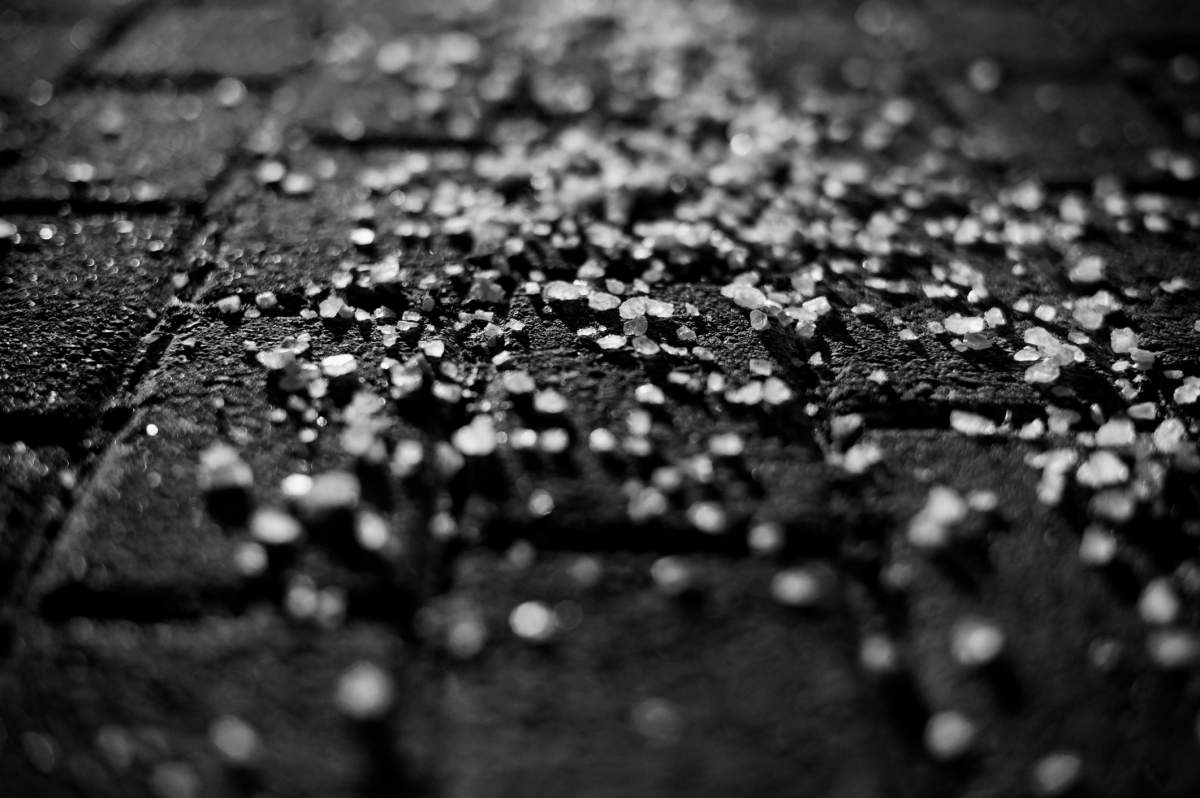The salt we use to melt ice and snow in winter can have adverse effects on water bodies and ecosystems.

While salt is a cost-effective solution for preventing slips and falls, too much salt runoff has the potential to infiltrate ground water and kill sensitive species, research shows.
Recognizing this issue, the City of Toronto has a salt management plan that outlines how salt is to be transported, stored and used in City operations.
In partnership with Live Green Toronto, we explore the possible negative effects of using too much salt and provide simple tips to mitigate these issues.
“Salt does dissolve in water, but it builds up in our creeks, rivers, lakes and our groundwater,” says Hendricks.
Why do we use salt?
Quite simply, it works.
“Road salt is readily available, cheap and does the job of melting ice and keeping our roads safe for driving, biking, and walking,” says Elizabeth Hendricks, vice-president of freshwater for WWF Canada.
“The problem is… we use too much of it. We often misjudge how much salt is needed to create safe winter conditions.”
While the sound of salt crunching underneath our boots gives us comfort that we likely won’t take a spill, it’s also a sign that too much of it has been scattered or that it’s been applied at the wrong temperature.
There’s also a misconception that salt actually melts away with the ice. It doesn’t.
“Salt does dissolve in water, but it builds up in our creeks, rivers, lakes and our groundwater,” says Hendricks.
The freshwater connection

Get daily National news
But how does it get to those bodies of water? After being sprinkled on our roads and sidewalks, salt often ends up washing away and seeping into the ground. From there, the runoff makes its way into lakes and rivers.
It’s a problem because too much salt (measured by tracking chloride levels) can actually be toxic in some ecosystems.
“Freshwater wildlife and plants can’t survive when too much road salt runs into our lakes, rivers and creeks,” says Hendricks.
“Frogs, fish and salamanders are adapted to low chloride levels. So when the water becomes too salty, it disrupts their basic functions. It’s like if the amount of oxygen in the air we breathe was to drastically change.”
In 2011, six blue crabs were found in Toronto’s Mimico Creek. That was a bad sign because blue crabs are saltwater creatures that typically can’t breed in freshwater. The creek was salty enough for them to thrive.
The big picture
Collectively, all of that seepage is boosting chloride levels of our largest connected freshwater ecosystem, the Great Lakes Basin.
“Eighteen per cent of the world’s total freshwater and diverse species like turtles, moose, bald eagles, and waterfowl— in all, more than 200 species— are impacted by rising salt levels,” says Hendricks.
Our household pets are too. Salt can wedge into paws causing inflammation and irritation.
READ MORE: How to keep pet dogs happy and healthy in the winter
What to do?
Toronto property owners are responsible for ensuring that all ice and snow is cleared from steps, landings, walkways and driveways within 24 hours (12 hours if you live in the downtown core) of a snowfall.
Cameron Wilson from the City of Toronto’s Environment & Energy Division offers these tips to manage salt use:
- Shovel as soon as possible, before snow gets packed down.
- Apply salt to melt any remaining snow or ice. Give it time to work, then shovel again.
- Use the right amount. Follow the manufacturer’s instructions on how much product to use and check its effective temperature range. Salt starts to lose its effectiveness at around -10 C and is not effective below -20 C.
- Apply sand as a traction aid, if needed.
- If you live in a condo or apartment building, talk to your landlord or management about using the right amount of salt on walkways. Consider doing this as well in your place of business.
Be mindful of the amount of salt you use this winter. For more information, visit smartaboutsalt.com and livegreentoronto.ca.

%20PKG%20STILL.jpg?w=1040&quality=70&strip=all)


